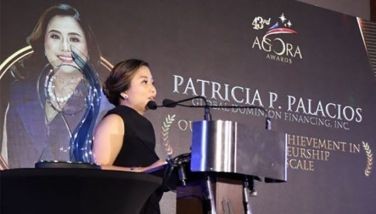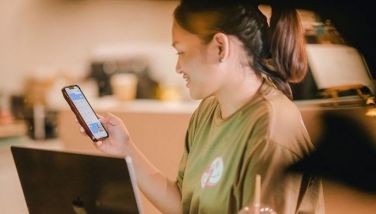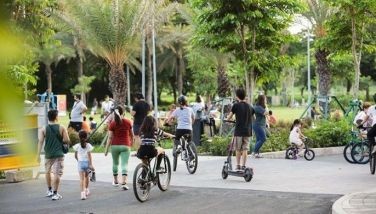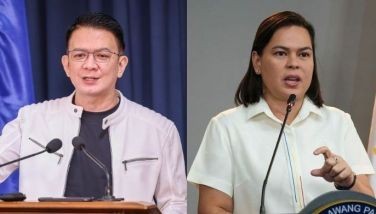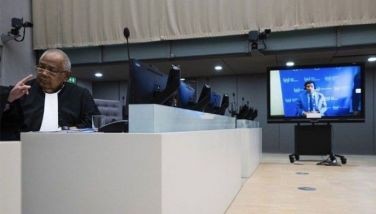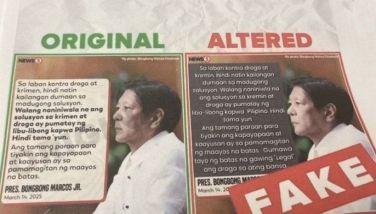They called it ‘brotherhood’
Two years after Max and I got married, we moved to Saigon where he worked with the Vietnam Presse during President Ngo Dinh Diem’s governance. I got used to the military state of the country. Every block had a soldier standing guard with an uzi machine gun. I had no job and we still did not have children. So I said, why not teach? I was just swimming at the pool daily while Max played tennis at the Cercle du Sportif, the French sports club. This was how I found out I had a knack for handling children. English-speaking teachers were scarce, so I got two jobs. Impatient to have babies, I began to teach small children in the Khai Minh Primary School near the house. Thrice a week, I taught at the Jesuit Chinese high school in Cholon. Two evenings a week, I would be asked to give English lessons to Vietnamese businessmen.
Foreseeing a coup d’etat, Max did not renew his contract with Vietnam Presse and we returned to Manila. While he became publisher of the Evening News, I worked half day at Telly Albert’s San Lorenzo Preschool in Makati in 1960. There, I assisted Elsbeth Graemigher a Montessori teacher from Switzerland. I thought I could pass as a Montessori teacher after two months of discussing Montessori with her, learning the use of materials and reading some Montessori books. When she returned to Europe I took over her class. For one quarter I kept my four-year old students busy but failed to maintain the same momentum the rest of the year. I realized that I was not properly grounded in the advanced Math, Language and Science portions as required in the International Montessori Course.
The birth of Operation Brotherhood Montessori Pagsasarili
The outreach program for the underprivileged was formally started in 1983 but the Operation Brotherhood Montessori Inc. traces its roots from its early beginnings in 1963 at Sapang Palay, Bulacan, under the auspices of Operation Brotherhood International. To understand its lowly beginnings, we have to go back to the Operation Brotherhood story.
They called it ‘Brotherhood”
Operation Brotherhood International founded by the late Architect Oscar Arellano then vice president of Jaycees International brought Filipino doctors to Vietnam in 1956 to aid the war refugees in Saigon and Hanoi. The Filipino doctors and nurses were indeed a great relief to these people who in today’s history symbolize man’s loss of freedom and liberty in the last half of the 20th century.
More Filipino doctors and volunteers, including the late Mayor Cesar Climaco and Emma Benitez-Araneta made-up a large O.B. team who went to Laos. Funding was provided by the Jaycees International, AID and the Royal Laotian government so that a total of six Filipino medical teams spread out in Laos. The Filipino doctors were hailed as the “true ambassadors of the Philippines” extending help in the beleaguered countries of Vietnam, Laos and Cambodia, known before as the French-Indochina states. The doctors treated both villagers and the rebels, dedicating themselves towards peace for the united brotherhood of men.
Tom Dooley, who worked in northern Laos in the late ‘50s, (dying in 1961 of cancer) was a close friend of Mr. Arellano. Inspired by the dedication of the Filipino doctors and nurses in Laos he set up the US Peace Corps. The Japanese Overseas Volunteer Service also emerged in the same mold as the Philippine volunteer movement introduced by O.B. in Asia.
The first major relocation of squatters in Manila
In 1964, Operation Brotherhood International (O.B.I.) came home to the Philippines to help our own country. Mr. Arellano put up an O.B. team to help the 3,000 squatter families relocated in Sapang Palay, Bulacan. For 15 years, these families whose menfolk were pier haulers and knew only a miserable life lived within the thick walls of Intramuros, the colonial Spanish heritage site of Manila. There were constant fights with the police and the women folks used slingshots to distract them. But their lives changed in Sapang Palay where Operation Brotherhood being a humanitarian organization, provided a 24-hour service of medical and socio-economic assistance. They could be trusted specially in assisting the pregnant women unlike the government welfare assistants who would arrive late in the day and depart before their shift ends.
Mr. Arellano believed that man’s chance for freedom is to acquire the capacity for economic independence and be free to work and live decently. The Philippines may not have been at war as Vietnam, Cambodia and Laos but as ignorant, evicted and unemployed squatters they were just like the refugees of war. While the principle of self-help pervaded all its activities, great stress was placed on the education of the family unit.
He completed the team by hiring an agronomist, food technologist and social workers. The latter surveyed the chances of the poor people to recover from poverty by training them in occupational skills, helping them to help themselves. The men learned basic tailoring, animal husbandry and horticulture. The women so excited to learn fruit preservation and cooking remarked “Napalitan na ang ating mga tirador ng sandok para makapag hanap buhay tayo.” (Instead of slingshots we keep busy earning a livelihood with cooking spoons.) Among their resident instructors was a gay beautician who taught them hair cutting, manicure-pedicure and simpIe makeup. The multi-grade preschool had to be set up to occupy their children enabling the adults to concentrate in their training program.
Agents of change
In 1965, Architect Arellano convinced me to leave my teaching job in Makati to help organize the Operation Brotherhood John P. Delaney Preschool for the poor children. Up to now, I still remember Mr. Arellano sketching the figures of a Sapang Palay father and mother on his drawing board, representing the parents of the poor children “Precious, to attract people’s cooperation, we gave them doctors. But to inspire them to dedicate their whole life to a self-help program, we must provide the best education to their offsprings. When you transform a lazy, disorderly and dependent child to love work, order and acquire independence, each father, each mother cannot help but show him off as a model to their families. This transformation triggers a chain of influence to all the uncles and aunts on both side of the family. This child, Precious, is the agent of change for the nation.”
(For feedback email to precious.soliven@yahoo.com)
- Latest















